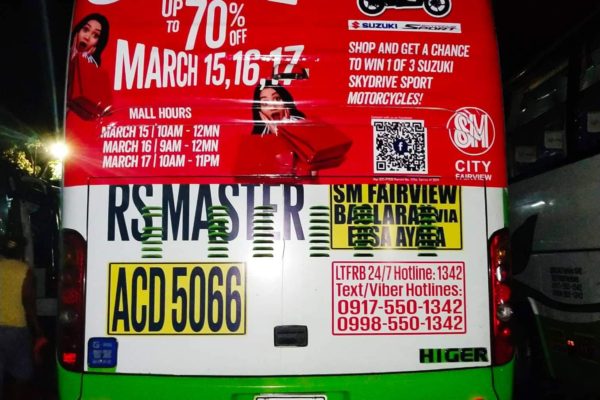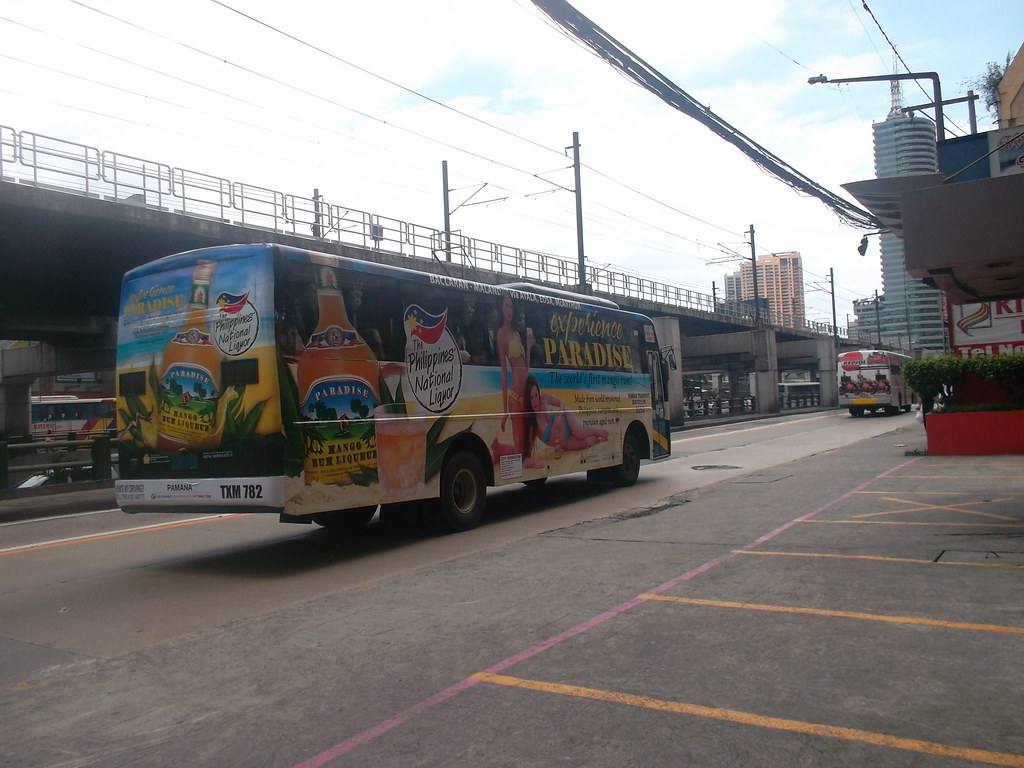Transit Advertising Philippines for Unmatched Brand Name Visibility
Transit Advertising Philippines for Unmatched Brand Name Visibility
Blog Article
A Thorough Examination of the Techniques and Techniques for Effective Transportation Advertising And Marketing Campaigns
Transit ad campaign use an unique possibility for brands to involve with varied audiences in vibrant environments. To achieve success, it is vital to understand the subtleties of target demographics, implement innovative style techniques, and select optimum placement locations. Additionally, the efficiency of these projects can be considerably boosted by closely keeping an eye on efficiency metrics and adapting methods accordingly. As we discover these vital elements, it becomes clear that the course to an impactful transit advertising and marketing strategy is both intricate and satisfying, increasing the concern of how ideal to browse these complexities for optimal brand presence.
Understanding Target Demographics
Understanding target demographics is critical for the success of transportation ad campaign (Transit Advertising Philippines). Determining certain audience segments allows advertisers to customize their messages properly, ensuring that the material resonates with the designated audiences. This method improves engagement and maximizes roi
To effectively analyze target demographics, marketing experts must think about numerous crucial aspects, including age, revenue level, lifestyle, and line of work preferences. As an example, a project focused on young experts might concentrate on comfort and modernity, while one targeting families might highlight safety and dependability. Moreover, geographic elements such as metropolitan versus rural settings can considerably influence consumer actions and preferences.
Information collection approaches such as studies, emphasis groups, and social media sites analytics offer useful understandings right into group trends and consumer habits. By leveraging this details, marketers can craft compelling narratives that align with the worths and requirements of their target market.
Ultimately, understanding target demographics not just informs the critical direction of transit marketing campaign however also guarantees that resources are assigned efficiently. This targeted approach increases the possibility of achieving project objectives, promoting brand name loyalty, and driving conversions.
Innovative Style Techniques
Reliable communication with target demographics relies greatly on cutting-edge creative design methods in transit advertising campaigns. To properly catch attention in a congested aesthetic environment, designers should prioritize quality and aesthetic effect. Using bold colors and high-contrast components can enhance exposure, making certain that messages are conveniently clear from a distance.
Integrating vibrant images that resonates with the target audience is essential. Aesthetic narration techniques can stimulate feelings and create unforgettable associations with the brand name. In addition, calculated usage of typography aids share vital details rapidly; clear typefaces and ideal sizes even more enhance readability.
Incorporating interactive aspects, such as QR codes or increased fact functions, can engage commuters beyond passive monitoring (Transit Advertising Philippines). These techniques not just promote user communication yet additionally connect the gap in between conventional advertising and digital engagement
Furthermore, utilizing area creatively-- whether on bus wraps, transit shelters, or metro advertisements-- can bring about ingenious designs that damage the mold and mildew of conventional advertising. By welcoming creative creative thinking while preserving brand name consistency, projects can cultivate a strong link with their audience, inevitably driving both understanding and action. The integration of these style methods is paramount for attaining effective transportation advertising and marketing end results.
Strategic Placement Techniques
Optimizing the effect of transit advertising and marketing depends upon strategic positioning approaches that make sure ideal exposure and engagement. Effective positioning involves assessing high-traffic locations and understanding guest demographics to recognize the most useful areas why not look here for advertisement display screens. As an example, placing ads near entrances and leaves of transportation cars can record the focus of boarding and alighting guests, thus improving exposure.
Moreover, making use of both exterior and interior surfaces of transit lorries can significantly expand reach. Exterior advertisements, visible throughout commutes, involve pedestrians and other motorists, while indoor ads target passengers in a captive environment. Furthermore, putting promotions en route centers, such as bus terminals or train stations, permits for enhanced impacts as travelers shift between various settings of transportation.
Timing is additionally important; aligning the campaign launch with peak travel durations takes full advantage of target market engagement - Transit Advertising Philippines. In addition, leveraging digital displays in transportation environments can help with dynamic content, supplying real-time updates and boosting user communication. By utilizing these strategic placement methods, online marketers can ensure that their transportation marketing campaign achieve maximum visibility, reverberate with the target market, and eventually drive desired end results

Measuring Campaign Effectiveness
To examine the success of transit ad campaign, it is essential to use a range of dimension strategies that supply understandings right into target market engagement and general efficiency. click to read One key technique is the use of crucial efficiency indicators (KPIs), such as reach, impacts, and engagement rates, which evaluate the amount of people connected and viewed the advertisement with it.
Surveys and emphasis teams can likewise be critical in assessing consumer perceptions and recall, permitting marketers to comprehend the effect of their messaging. Additionally, tracking internet site web traffic and social media sites engagement throughout and after the project assists gauge straight actions to the advertising.
One more effective method is making use of location-based analytics, which can supply information walking traffic around details transit locations, using understandings into whether the project efficiently caught the interest of travelers. Furthermore, assessing sales data can disclose relationships between transportation advertising and raised income, supplying concrete evidence of a campaign's efficiency.
Study of Success
Comprehending the performance of transportation advertising and marketing projects with dimension methods lays the foundation for analyzing real-world instances that highlight successful results. By using geo-targeted electronic advertisements and analytics, the brand determined a 30% rise in sales in areas where the covers were prominently displayed, showing the direct influence of transportation advertising and marketing.
Another compelling instance comes from a regional not-for-profit organization that introduced a project on subway platforms to advertise a neighborhood occasion. The usage of direct engagement via innovation enhanced the campaign's reach and performance.

Conclusion
In summary, successful transit marketing projects demand an extensive approach that incorporates an understanding of target demographics, cutting-edge design methods, and strategic positioning. Jointly, these methods foster brand presence and optimize the i thought about this return on financial investment in transit marketing campaigns.
Understanding target demographics is critical for the success of transportation marketing campaigns.Reliable interaction with target demographics depends heavily on ingenious imaginative design strategies in transit advertising and marketing projects. By using these calculated placement approaches, online marketers can make certain that their transit marketing campaigns accomplish maximum presence, resonate with the target audience, and ultimately drive desired results.
Recognizing the performance of transit advertising projects with measurement strategies lays the groundwork for checking out real-world instances that highlight effective end results.In recap, successful transportation marketing projects demand a thorough strategy that incorporates an understanding of target demographics, cutting-edge design techniques, and calculated positioning.
Report this page